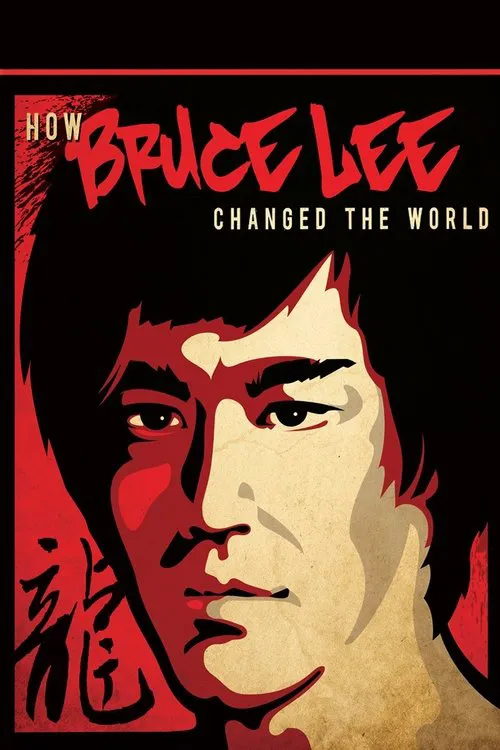How Bruce Lee Changed the World

Plot
"How Bruce Lee Changed the World" is more than a biographical documentary about the legendary martial artist and actor. It's a cinematic journey into the far-reaching influence Bruce Lee had on popular culture, exploring his impact on various sectors such as fitness, cinema, music, sport, dance, video games, and philosophy. The film chronicles this influence through the eyes of his daughter, Shannon Lee, as she travels to the United States, Asia, and Europe, tracing back her father's roots in Hong Kong and China. The documentary begins by introducing the world to Bruce Lee, the son of a Chinese immigrant and a Eurasian mother, born and raised in San Francisco. Lee's early life is marked by bullying and racism, but these experiences sparked his determination to prove himself as a fighter. Trained in wing chun by the renowned Ip Man, Lee eventually developed his own unique style of Jeet Kune Do, emphasizing individual expression and efficiency. As the documentary delves deeper into Bruce Lee's life, it focuses on his remarkable career in Hollywood. During the 1960s and 1970s, Lee appeared in several television shows and films, showcasing his charisma and acting prowess. One of his most iconic roles came in the TV series "Warrior" series "The Green Hornet," where he played Kato, his character's valet and martial arts assistant. The movie also explores Lee's personal life, his relationships, and his philosophies. He married Linda Lee Cadwell, an American woman, and they had two children, Brandon and Shannon. Through home movies and interviews with family members, the documentary reveals a more intimate side of Bruce Lee, a devoted husband and father who believed in the importance of education and family. However, "How Bruce Lee Changed the World" is not just about the man himself; it's about the profound impact he had on the world. Through interviews with athletes, musicians, actors, and directors, the documentary highlights Lee's influence on various sectors of popular culture. In the world of fitness, Bruce Lee's emphasis on physical conditioning and mental discipline has inspired many to adopt a holistic approach to exercise. His innovative techniques, such as the "punching bag technique," are still widely used today. The documentary features athletes like Tony Horton and Lee Haney, who credit Lee's philosophy for their own success. In cinema, Bruce Lee's impact is palpable. His films, particularly "Enter the Dragon" and "Fist of Fury," have influenced generations of filmmakers and actors, including Quentin Tarantino, who has frequently cited Lee as an inspiration. The documentary features interviews with directors like Martin Campbell and Tony Jaa, who discuss the influence of Lee's films on their own work. In music, Bruce Lee's music videos for "Be Water" and "Do the Dance" are celebrated as pioneering works in the martial arts and pop music industries. His music has inspired artists like Tupac Shakur and The Wu-Tang Clan. Regarding sports, Bruce Lee has inspired athletes to incorporate martial arts into their training regimes. Boxers like Muhammad Ali and Floyd Mayweather Jr. have referenced Lee's philosophy on mental preparation and physical conditioning. Other sports icons, like boxer Mike Tyson and basketball player Kareem Abdul-Jabbar, have spoken about the spiritual and mental benefits they derived from martial arts. Furthermore, in dance, Lee's Jeet Kune Do philosophy has influenced the development of contemporary dance forms like Capoeira and B-boy dance. Lee's movements and styles have inspired many choreographers, dancers, and performers, including Madonna, Michael Jackson, and the late dancer-choreographer, Tony Olmette. The influence of Bruce Lee extends far beyond these sectors, touching on areas like video games and philosophy. Lee's iconic "Be Water" philosophy – that one should be fluid and adaptable like water – has been incorporated into various video games, most notably in the popular "Street Fighter" series. Philosophically, Lee's emphasis on self-discovery and personal growth has inspired thinkers and spiritual leaders worldwide. Lee's philosophy has drawn comparisons to that of Buddhism, emphasizing the importance of living in the present moment and avoiding attachment to rigid structures. Throughout the documentary, "How Bruce Lee Changed the World" utilizes unique access to the Bruce Lee Foundation's photographic archive, home movies, and personal materials. These artifacts provide an intimate glimpse into Bruce Lee's life, shedding light on the personal struggles he faced and the triumphs he achieved. Shannon Lee's poignant narration guides the audience through a captivating journey of her father's life and legacy, which extends far beyond his iconic films and martial arts. Bruce Lee's impact on popular culture is undeniable, and "How Bruce Lee Changed the World" serves as an excellent testament to his enduring legacy. The documentary's international settings, featuring locations in the United States, Asia, and Europe, add to the visual narrative's depth and breadth. The film's stunning cinematography captures the diverse landscapes and cultures that have shaped Bruce Lee's life and the people whose lives he has touched. Ultimately, "How Bruce Lee Changed the World" is not just a documentary about one man's remarkable life; it's a testament to the human spirit's ability to transcend national boundaries and touch the hearts of people from all walks of life.
Reviews
Recommendations




